A lot of people know that you can make more fuchsia plants from cuttings, but have you ever looked at your pretty flowers and wondered if you could make more by planting seeds?
When a flower falls off, little pods are left behind. Those are the plant’s berries, which are actually called ovaries, and they hold the seeds of the plant.
Just keep in mind that you probably won’t create an exact replica of the existing plant. That’s because most fuchsias are hybrids, and they won’t grow true if you use this method.
We link to vendors to help you find relevant products. If you buy from one of our links, we may earn a commission.
No matter what, you’ll definitely grow a beautiful plant that you can eat and that will add color to your yard.
What Does a Fuchsia Seed Look Like?
Fuchsias are stunning, colorful flowers that can add vibrancy to any garden. But before the gorgeous blooms come delicate little seeds So what does a fuchsia seed look like?
Fuchsia seeds are very small, typically 1-2 millimeters long. They have an oblong, oval shape and are slightly curved The seed coat is shiny and smooth with a dark brown to black color. Fuchsia seeds develop inside seed pods after the flowers are pollinated
When to Harvest Fuchsia Seeds
It’s important to collect fuchsia seeds at the right time for the best chance of germination. Wait until the seed pods turn completely brown and start to crack open slightly. This indicates the seeds are mature. If you harvest too early, the seeds may not be viable. The ideal time is late summer to early fall after the flowers have faded.
How to Save and Store Fuchsia Seeds
Fresh fuchsia seeds have the highest viability for germinating new plants. But you can also save seeds to plant in future seasons. After collecting the pods, remove the seeds and spread them on a screen or paper to dry at room temperature for about a week. Then store the dry seeds in an airtight container in a cool, dry place. Kept properly, fuchsia seeds can remain viable for 2-3 years.
Sowing Fuchsia Seeds
Fuchsia seeds need light to germinate, so just press them gently into the soil surface when planting. Don’t cover them. Use a moist seed starting mix and maintain even moisture. Warm temperatures around 70°F are ideal. Covering the containers with plastic wrap helps retain humidity. Germination takes 2-4 weeks.
Growing Conditions for Fuchsias
Once germinated, fuchsia seedlings can be transplanted into pots or beds outdoors after hardening off. Site them in filtered sunlight. Fuchsias thrive in organically rich, humus-heavy soil with excellent drainage. They require consistent water during the growing season and benefit from regular feeding. Remove faded flowers to encourage more blooms. With proper care, fuchsias grown from seed can produce flowers the first year.
The Tiny Seed’s Significance
While so small they’re nearly invisible, fuchsia seeds hold incredible potential. With the proper conditions and care, each little speck can transform into a stunning plant covered in showy, pendulous blossoms. Understanding what fuchsia seeds look like allows gardeners to fully appreciate the magic within.

How to Harvest the Pods
First, a little anatomy lesson.
When you look at a flower, you’ll see a long stem that holds it firmly to the plant. That’s the pedicel, and it’s attached to a little bulb at the base of the flower. This is the ovary, where the seeds are forming inside.
The flower, which has the tube (which is connected to the ovary), the sepals (outer petals), and the petals or corolla, is below that. Coming out of the inside of the petals you’ll see the filaments, anthers, style, stamen, and stigma.
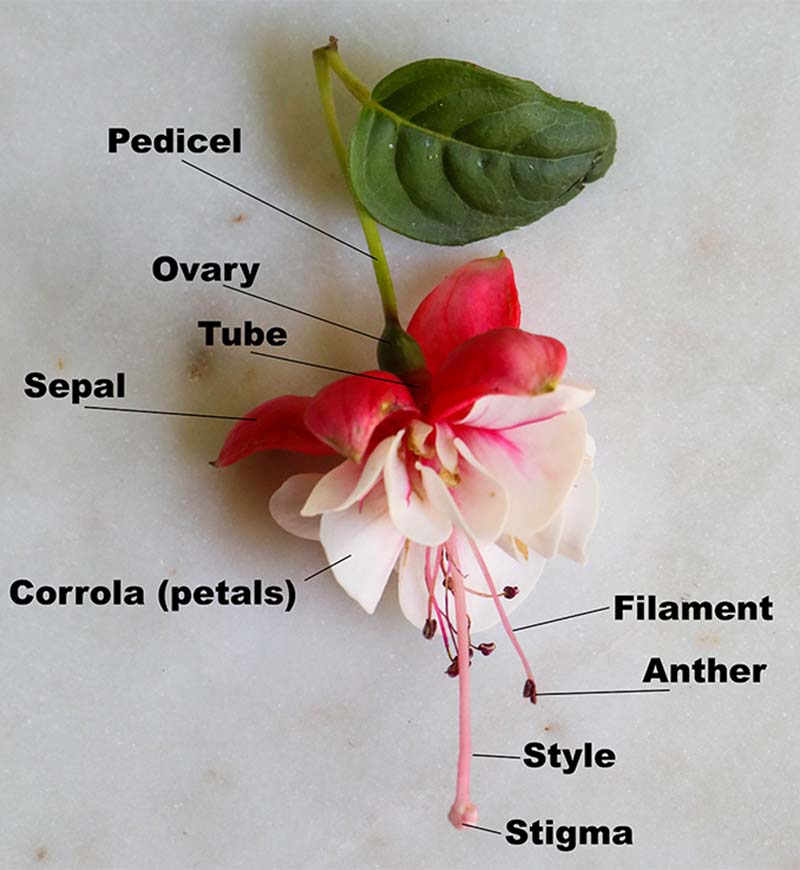
Instead of deadheading your plants, let the flowers fall off naturally. When they fall, the ovary stays behind. If the flower was pollinated, it will get bigger and fuller, and its color will change from green to red or purple.
You will need to keep an eye on both the size and the color of the ovaries because not all fuchsias have green ones at first. Some start out red and turn a darker red, for example.
This hybrid, shown below, is greenish-red at first, then turns green, and finally turns a dark red when it’s ready.
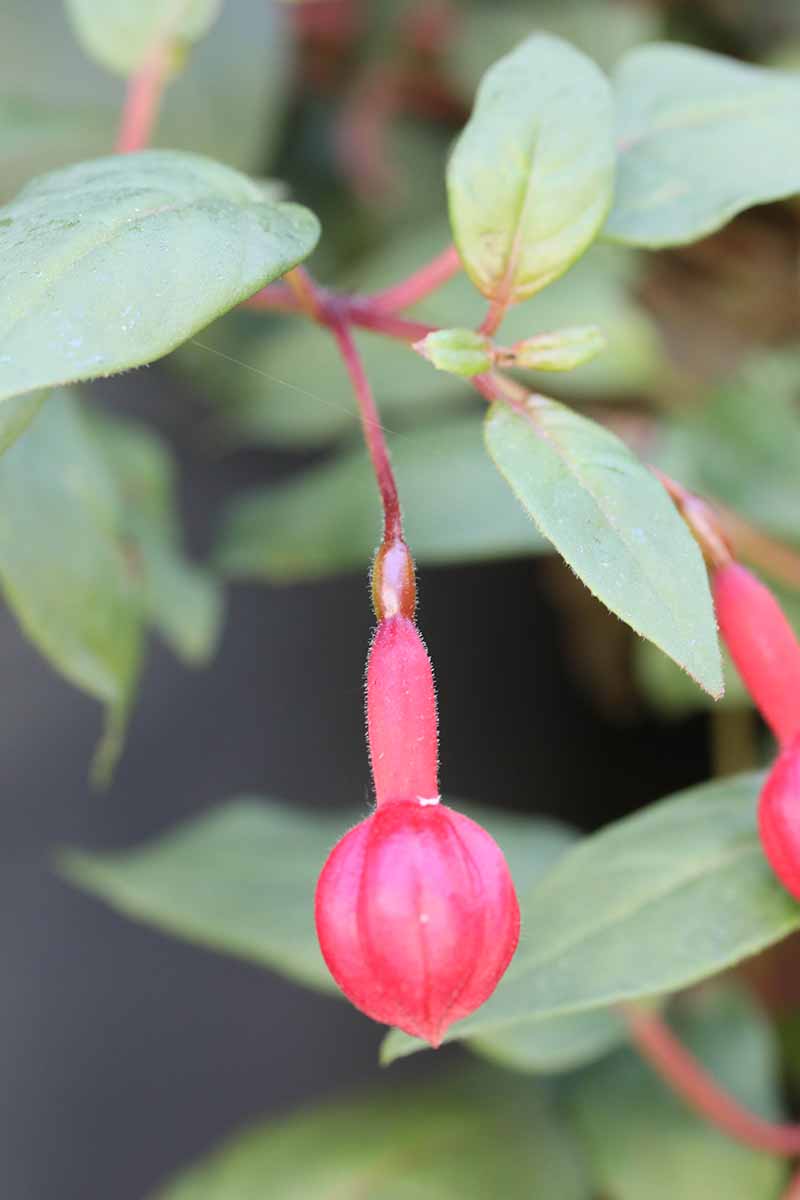
Others stay green and just become darker green.
This berry pictured below is too immature to harvest.
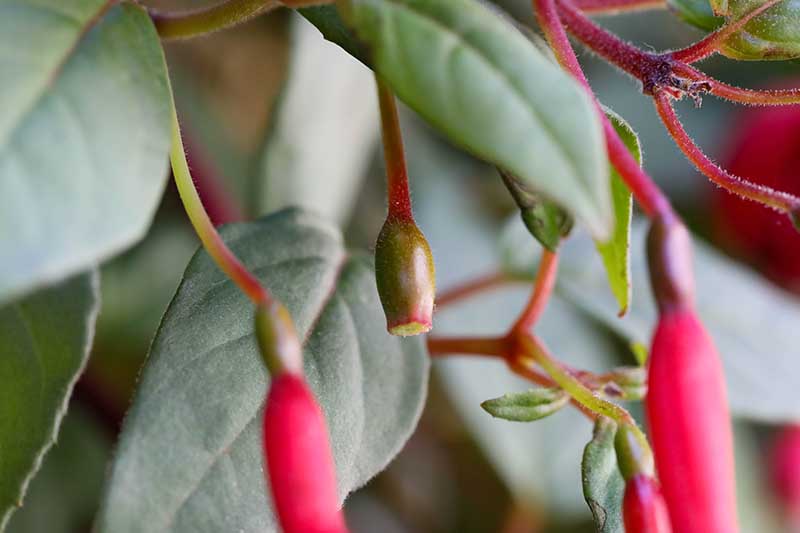
This berry is plump, starting to wrinkle, and has turned dark red. It’s ready to go.
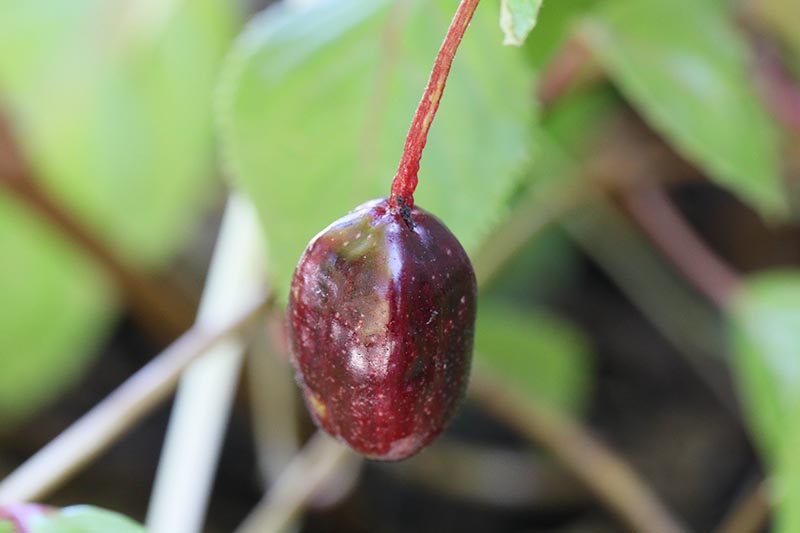
Cut the berry off with clean scissors or clippers once the color changes and it is no longer hard and firm but juicy and full.
If you aren’t sure, wait until the berry pod starts to shrivel up slightly before harvesting it.
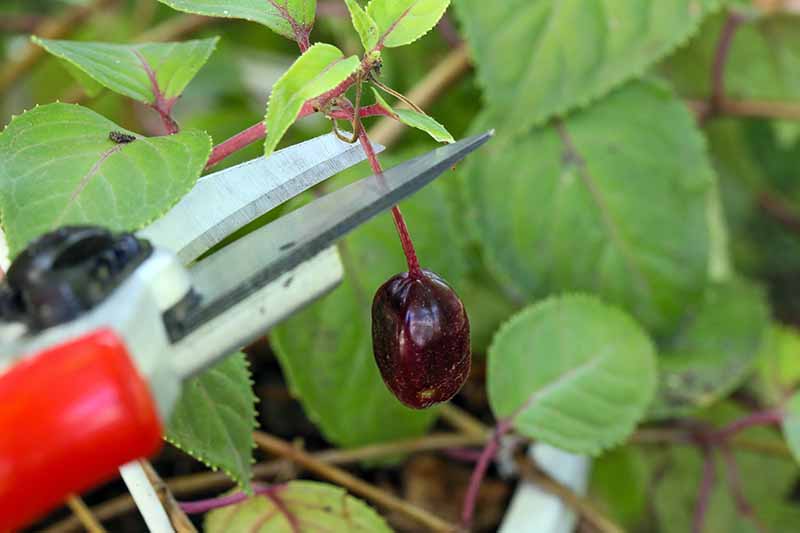
Right now, the birds are more likely to eat your berries than you are, unless you do something. Birds love them when they become big and juicy.
To protect the berries, tie muslin bags around them, or cover the entire plant in mesh fabric. Prop the fabric away from the plant so it isn’t touching the leaves.
Don’t be surprised if your fuchsia stops producing flowers if you let it go to seed. Once a plant starts producing fruit, it often stops producing blossoms.
Don’t let this happen; instead, let a few berries form at a time and keep cutting off the rest of the flowers.
Check out our guide to deadheading for more tips on how and when to cut off the flowers.
Using Seeds vs. Cuttings
Almost all the fuchsias you see at the nursery or home stores are hybrids.
In other words, if you save their seeds and plant one, the new plant that grows might not look like the one it came from.
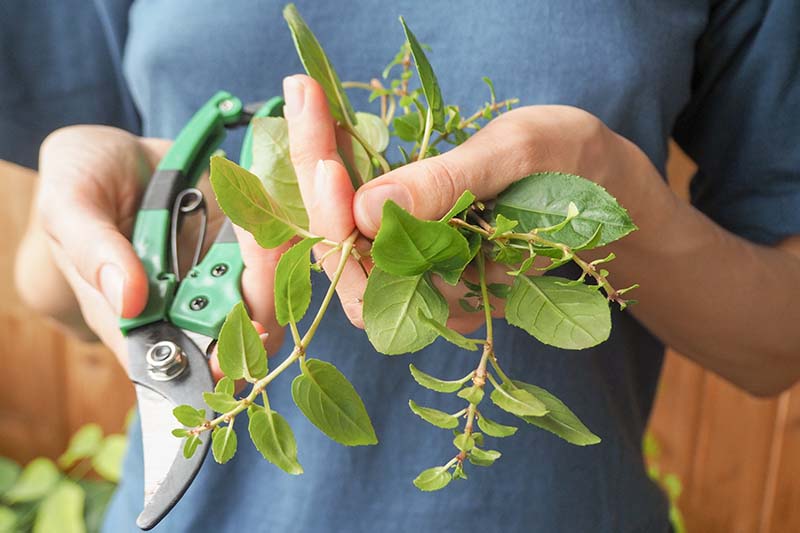
That’s okay, you might end up with something just as interesting. However, I wanted to let you know in case you were hoping to exact copy a specimen that you really love.
You can do that, by the way, but you’ll need to propagate your plant through stem cuttings instead.
By using this method, you can still have some control over the traits of the plant you make, even though not all types will grow true.
How so? By manually cross-pollinating two fuchsias that you like.
If you have more than one hybrid or species of plant, separate them by putting them in a greenhouse, indoors, or with covers.
You don’t want them to accidentally cross-pollinate the old-fashioned way, through visiting bees and other pollinators.
You can carefully cut off the anthers of a flower on one plant or use a toothpick to remove the pollen from them.
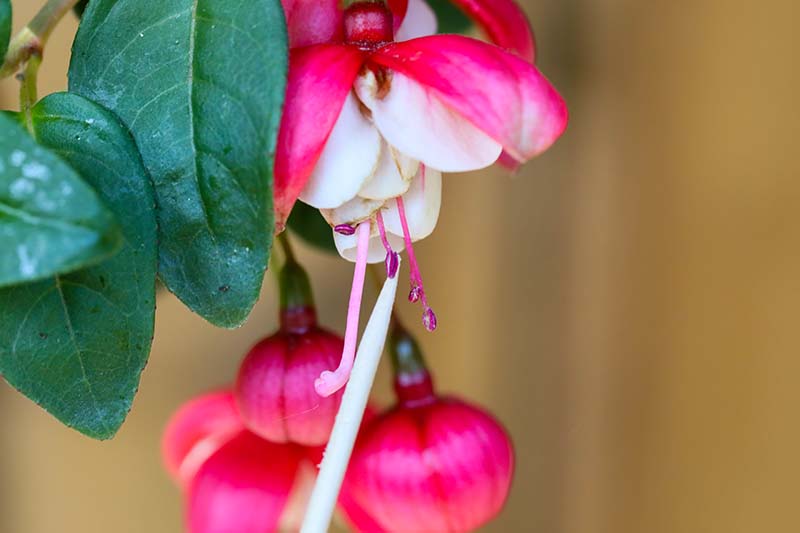
Brush the toothpick or the ends of the anthers against the stamen of an open flower to spread the pollen to the other fuchsia.
Let the flower you pollinated turn into a berry, then follow these steps to pick it and save it.
Keep in mind that some fuchsias are sterile. They either won’t produce berries, or the berries they produce won’t produce seeds.
If you’re hoping to hand pollinate, be sure to read up on your particular species, hybrid, or cultivar.
Fuchsia propagation from seeds
FAQ
How do you get seeds from a fuchsia?
Are fuchsias easy to grow from seed?
Can you save seeds from a fuchsia plant?
Should you remove seed pods from fuchsia?
- A Complete Guide to Caring for Yuki Cherry Blossom Shrub - January 23, 2025
- Identifying Red Hot Poker Seeds: What to Look For When Harvesting Torch Lily Pods - January 23, 2025
- A Complete Guide to Harvesting Evening Primrose Seeds - January 23, 2025
